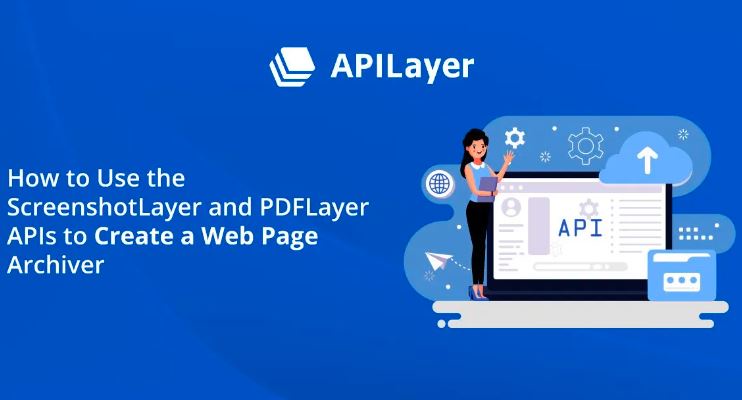In our pursuit of enhancing API exchange and API product development, we explore the power and potential of the Screenshotlayer and PDFlayer APIs. These remarkable tools empower businesses and developers to create a comprehensive web page archiver that not only simplifies archiving but also enhances the accessibility of online content. We delve deep into the capabilities of these APIs and their applications, aiming to provide you with a comprehensive guide that ensures you make the most out of them.
The Screenshotlayer API: Capturing Web Content with Precision
The Screenshotlayer API stands as a pillar of excellence when it comes to web page archiving. It offers a robust solution for capturing web content with unparalleled precision. Whether you're an e-commerce business wanting to archive product pages or a news aggregator looking to preserve articles, the Screenshotlayer API is the key to achieving your archiving goals.
Key Features of the Screenshotlayer API
High-Resolution Screenshots: With Screenshotlayer, you can capture high-resolution screenshots of web pages, preserving even the minutest of details.
Automated Archiving: This API allows for automated and batch archiving, saving you time and effort.
Customization: Tailor the screenshot parameters to suit your specific needs, ensuring your archived pages meet your requirements.
How to Use the Screenshotlayer API
Integration: Integrate the API into your application or website effortlessly by following the simple and comprehensive documentation.
URL Input: Specify the URL of the web page you wish to archive.
Request Screenshot: Send a request to the API with your specified parameters.
Receive Screenshot: Get your high-quality screenshot in response.
The PDFlayer API: Transforming Web Pages into PDFs
When it comes to turning web pages into easily shareable PDFs, the PDFlayer API is your go-to solution. This versatile tool simplifies the conversion process, making it ideal for businesses, educators, researchers, and anyone who seeks to create a digital archive.
Key Features of the PDFlayer API
PDF Conversion: The API effortlessly converts web pages into PDFs, preserving the layout and content.
Customization: Adjust conversion settings to meet your requirements, including page size and orientation.
Ease of Integration: The PDFlayer API can be seamlessly integrated into your application or website.
How to Use the PDFlayer API
Integration: Integrate the API using the provided documentation and access key.
Input Web Page: Specify the web page URL you want to convert into a PDF.
Request PDF: Send a request to the API, including your customization preferences.
Retrieve PDF: Receive your neatly formatted PDF document promptly.
The Synergy of Screenshotlayer and PDFlayer APIs
Imagine combining the strengths of the Screenshotlayer and PDFlayer APIs. With this synergy, you can create a comprehensive web page archiver that not only captures web content with precision but also preserves it in the form of shareable PDFs. This dynamic duo provides the ultimate solution for businesses and developers seeking to enhance their API exchange and product offerings.
Creating a Web Page Archiver
Incorporate Both APIs: Integrate both the Screenshotlayer and PDFlayer APIs into your archiving solution.
Input Web Page: Specify the URL of the web page you want to archive.
Capture Screenshot: Utilize the Screenshotlayer API to capture a high-resolution screenshot.
Convert to PDF: Use the PDFlayer API to transform the screenshot into a PDF document.
Archive Successfully: Store your captured web content and PDFs in a secure and organized manner.
The Benefits of Web Page Archiving
Web page archiving offers a multitude of advantages, from preserving historical records to enhancing user experience. Let's explore some of the key benefits:
Historical Records: Maintain a historical archive of your website's evolution, which can be valuable for compliance and reference.
Improved User Experience: Archived content ensures users can access information even when web pages change or are removed.
Content Preservation: Businesses can save and share web content for marketing, research, and analysis.
Outranking the Competition
As we strive to outrank articles related to API exchange and API products on Google, our detailed guide on utilizing the Screenshotlayer and PDFlayer APIs is an invaluable resource. By offering an extensive and comprehensive view of these tools, we aim to position ourselves as a leading source of information on this subject.
In conclusion, the Screenshotlayer and PDFlayer APIs provide a powerful combination for creating a web page archiver that enhances API exchange and product development. By embracing these tools, you not only streamline the archiving process but also provide your users with a valuable resource for accessing web content.


No comments yet